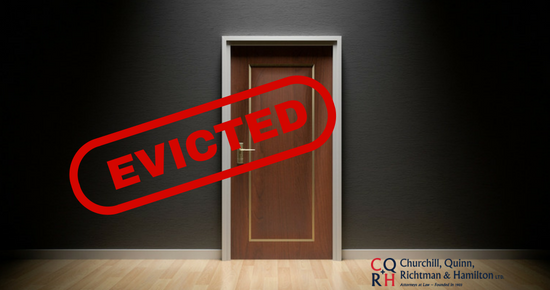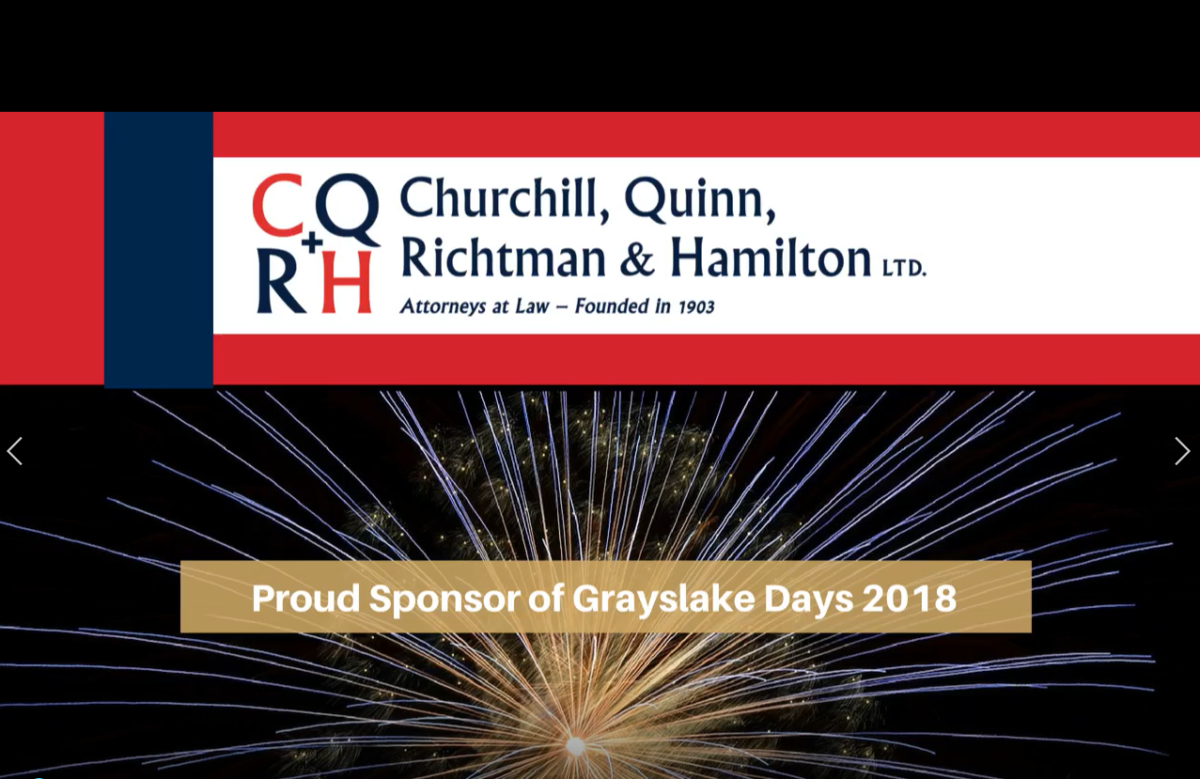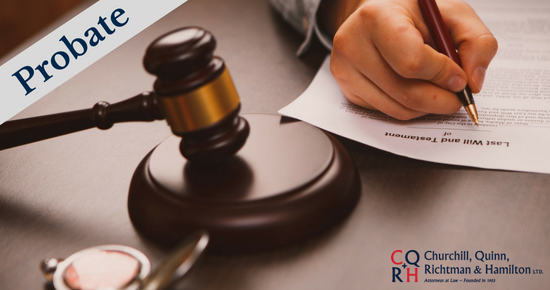When it comes to settling an estate, most people have heard that it is best to avoid probate whenever possible. But how many people even know what it is? It is a lot easier to navigate this issue when you have the necessary information, so here are the basics of probate.
When it comes to settling an estate, most people have heard that it is best to avoid probate whenever possible. But how many people even know what it is? It is a lot easier to navigate this issue when you have the necessary information, so here are the basics of probate.

Probate Defined
Probate is the legal process of a court validating a person’s will and distributing their estate after they pass away. This can be a complex and lengthy process, especially if a will was never prepared prior to death or if there is a large estate involved.
The Probate Process
The court first names an executor, or administrator, of the estate which may be stated in the will or assigned by the court if there is no will. It is the executor’s duty to prove validity of the will, as well as provide a list of the deceased’s assets and debts. Creditors must usually be paid from the assets of the estate before the beneficiaries can receive anything, although there are sometimes exceptions to this rule.
Once all of the debts have been satisfied, necessary tax returns have been filed, disputes settled, beneficiaries paid and the estate closed, the executor’s role is complete. There are many details involved in this process and help is often needed. Churchill, Quinn, Richtman & Hamilton has experienced probate and trust administration attorneys who can help you sort through these details in order to avoid further stress during a difficult time of loss.
Probate Causes Problems
The probate process can be very long, sometimes lasting for years. Heirs can be left waiting for inheritances that they are counting on. All fees and expenses get paid from the estate and can therefore significantly reduce the value of the estate over time. And the process can cause stress on a family, sometimes even tearing families apart.
Avoid Probate
The best way to avoid the pitfalls of probate is through appropriate planning ahead of time. Churchill, Quinn, Richtman & Hamilton can prepare a will, set up a trust, establish joint ownership of assets and address many more estate planning issues in order to aid in the effective administration of an estate, whatever your situation may be. Call us now at 847-223-1500 or visit dev-cqrh.pantheonsite.io for more information.
See fully referenced articles HERE and HERE
 Put on your best costume and hurry over to downtown Grayslake on Saturday, October 27th from 11:00am – 1:00pm for some Halloween trick-or-treating family fun! Churchill, Quinn, Richtman & Hamilton is happy to be participating in this great annual event that allows kids a fun and SAFE way to get some treats from local businesses around town. Watch for the orange pumpkin signs in the windows to see who has the goodies to hand out.
Put on your best costume and hurry over to downtown Grayslake on Saturday, October 27th from 11:00am – 1:00pm for some Halloween trick-or-treating family fun! Churchill, Quinn, Richtman & Hamilton is happy to be participating in this great annual event that allows kids a fun and SAFE way to get some treats from local businesses around town. Watch for the orange pumpkin signs in the windows to see who has the goodies to hand out.


 Your family business is your pride and joy, and you have undoubtedly invested a great deal of money, time, and energy into creating a successful company with the intention of passing it on to your relatives when you retire. There are many challenges that can arise that can put your plan at risk (such as family disagreements or taxes), but these suggestions can help you create a viable
Your family business is your pride and joy, and you have undoubtedly invested a great deal of money, time, and energy into creating a successful company with the intention of passing it on to your relatives when you retire. There are many challenges that can arise that can put your plan at risk (such as family disagreements or taxes), but these suggestions can help you create a viable 
 For small businesses, every penny counts, and even a small bill left unpaid by a customer can make a big difference in your bottom line. For some customers, a missed payment might be a simple oversight and a quick reminder may do the trick. But for others, it might take a bit more work. As frustrating as debt collection can be, it is possible to recover payment on past due invoices. Here are some tips for keeping the bills paid and collecting on those that are late.
For small businesses, every penny counts, and even a small bill left unpaid by a customer can make a big difference in your bottom line. For some customers, a missed payment might be a simple oversight and a quick reminder may do the trick. But for others, it might take a bit more work. As frustrating as debt collection can be, it is possible to recover payment on past due invoices. Here are some tips for keeping the bills paid and collecting on those that are late.
 When entering into a transaction with another party for goods or services, it is always in the best interest of both parties to execute a signed contract, detailing the terms of the agreement. However, this does not always guarantee a favorable end result, as there are a number of ways that a breach of contract may occur.
When entering into a transaction with another party for goods or services, it is always in the best interest of both parties to execute a signed contract, detailing the terms of the agreement. However, this does not always guarantee a favorable end result, as there are a number of ways that a breach of contract may occur.


 A landlord’s perfect scenario is renting to someone who is quiet, respectful of their property and pays the rent on time every month. Likewise, a renter expects a safe, well-maintained property in exchange for rents paid. But when a landlord feels that the tenant does not abide by the rules set forth in their rental agreement, there is a specific eviction
A landlord’s perfect scenario is renting to someone who is quiet, respectful of their property and pays the rent on time every month. Likewise, a renter expects a safe, well-maintained property in exchange for rents paid. But when a landlord feels that the tenant does not abide by the rules set forth in their rental agreement, there is a specific eviction 
 case. EVERY client was granted a reduction. That’s what we call a successful day.
case. EVERY client was granted a reduction. That’s what we call a successful day.



 Keep your eyes on the skies as the 6th annual Grayslake Color Aloft Balloon Festival takes flight on August 25th. This exciting event, sponsored by Churchill, Quinn, Richtman & Hamilton, will feature hot air balloons being inflated and competing to see which one can land closest to the Fox River. Once retrieved and returned to the park, the balloons will be illuminated by their burners in a captivating glow that you don’t want to miss.
Keep your eyes on the skies as the 6th annual Grayslake Color Aloft Balloon Festival takes flight on August 25th. This exciting event, sponsored by Churchill, Quinn, Richtman & Hamilton, will feature hot air balloons being inflated and competing to see which one can land closest to the Fox River. Once retrieved and returned to the park, the balloons will be illuminated by their burners in a captivating glow that you don’t want to miss.
 Celebrate the end of summer at this great family event sponsored by Churchill, Quinn, Richtman & Hamilton. Grayslake Summer Days is happening on August 17th and 18th and will have tons of fun activities to choose from.
Celebrate the end of summer at this great family event sponsored by Churchill, Quinn, Richtman & Hamilton. Grayslake Summer Days is happening on August 17th and 18th and will have tons of fun activities to choose from.


 Owning commercial real estate can be a very rewarding experience but purchasing it can be a challenge. Some people may be hesitant to make the investment because they think it will be too complicated. But by doing some preliminary research and having the right experts helping you, anyone can enjoy the benefits that commercial real estate can offer.
Owning commercial real estate can be a very rewarding experience but purchasing it can be a challenge. Some people may be hesitant to make the investment because they think it will be too complicated. But by doing some preliminary research and having the right experts helping you, anyone can enjoy the benefits that commercial real estate can offer.


 Churchill, Quinn, Richtman & Hamilton is proudly sponsoring the 27th Annual Grayslake Chamber of Commerce 5K Run & Walk through historic Grayslake. Runners, walkers, strollers and wheelchair athletes of all ages and abilities are encouraged to participate in this fun community event on July 14th.
Churchill, Quinn, Richtman & Hamilton is proudly sponsoring the 27th Annual Grayslake Chamber of Commerce 5K Run & Walk through historic Grayslake. Runners, walkers, strollers and wheelchair athletes of all ages and abilities are encouraged to participate in this fun community event on July 14th.
